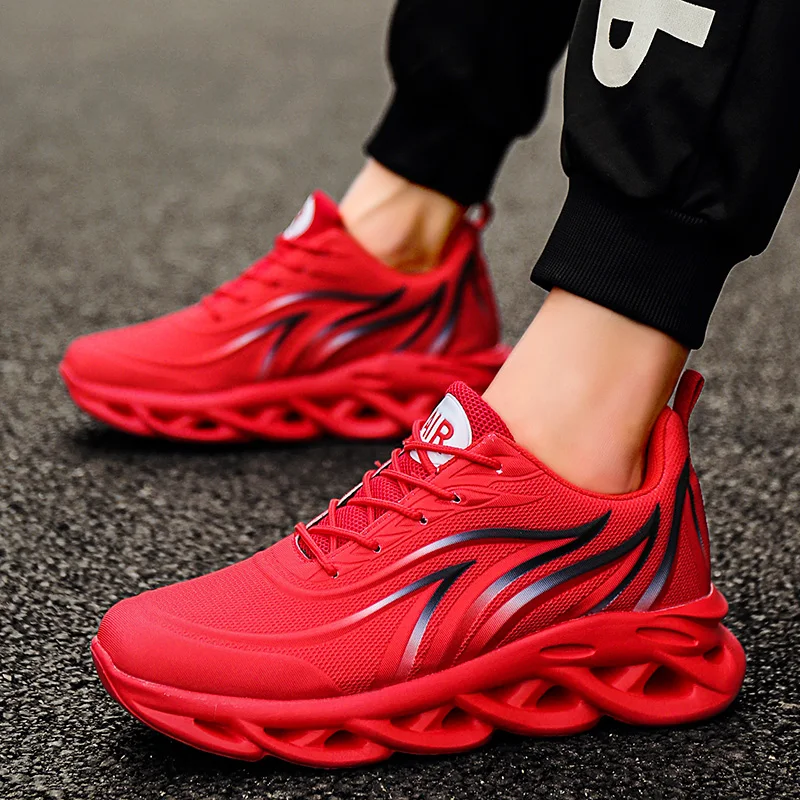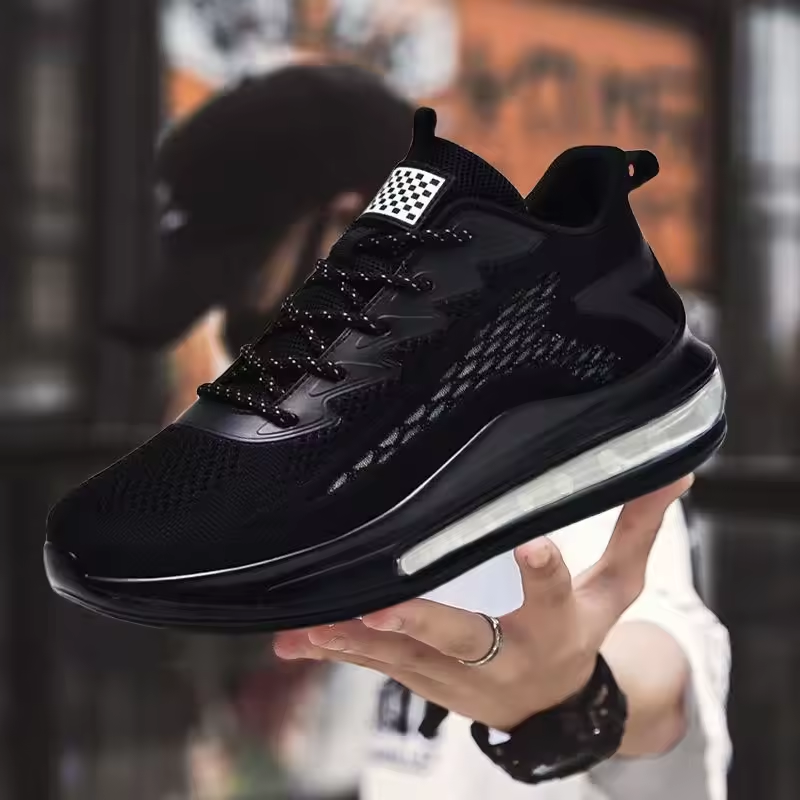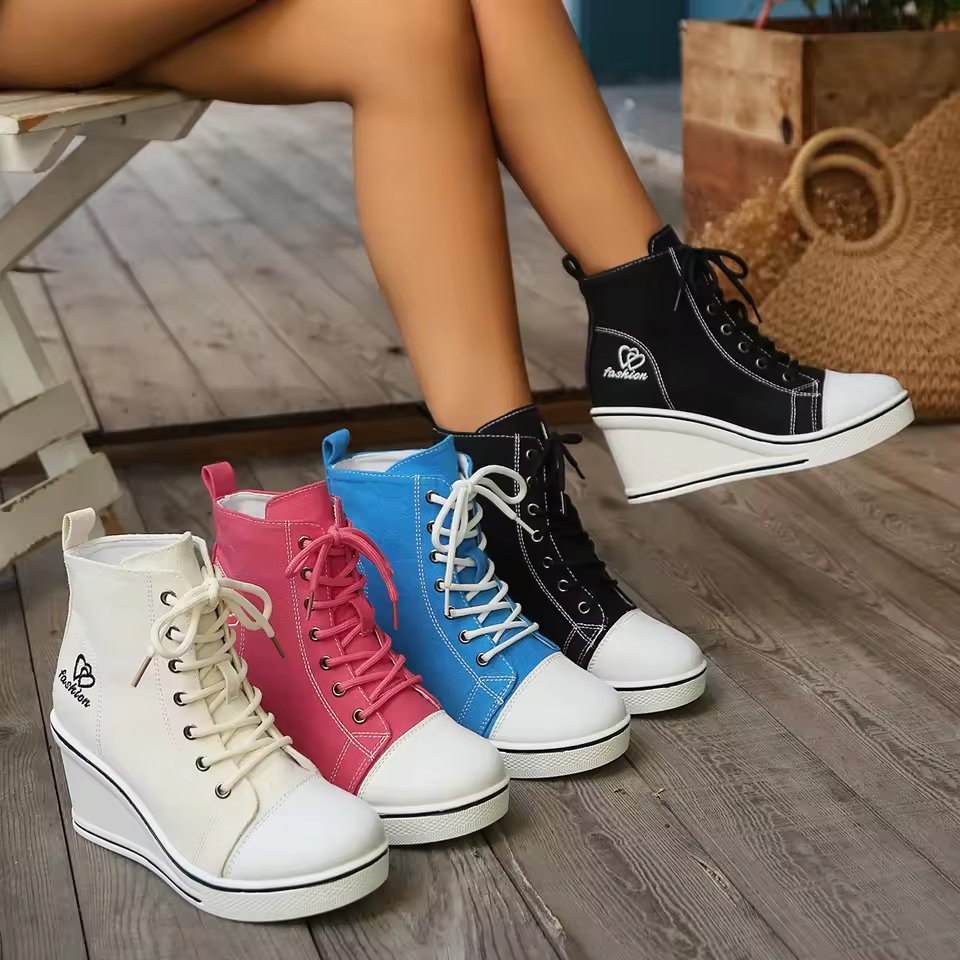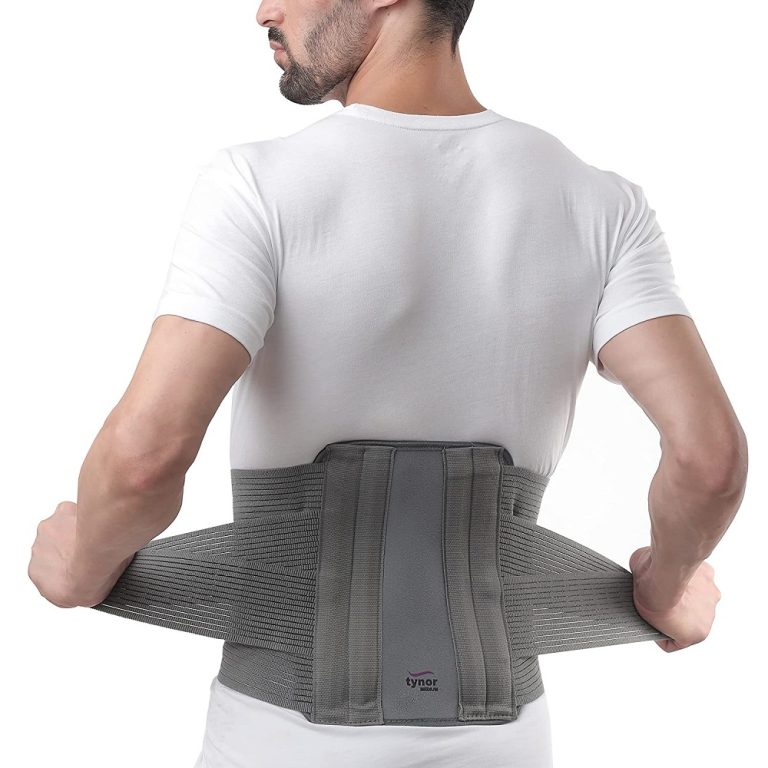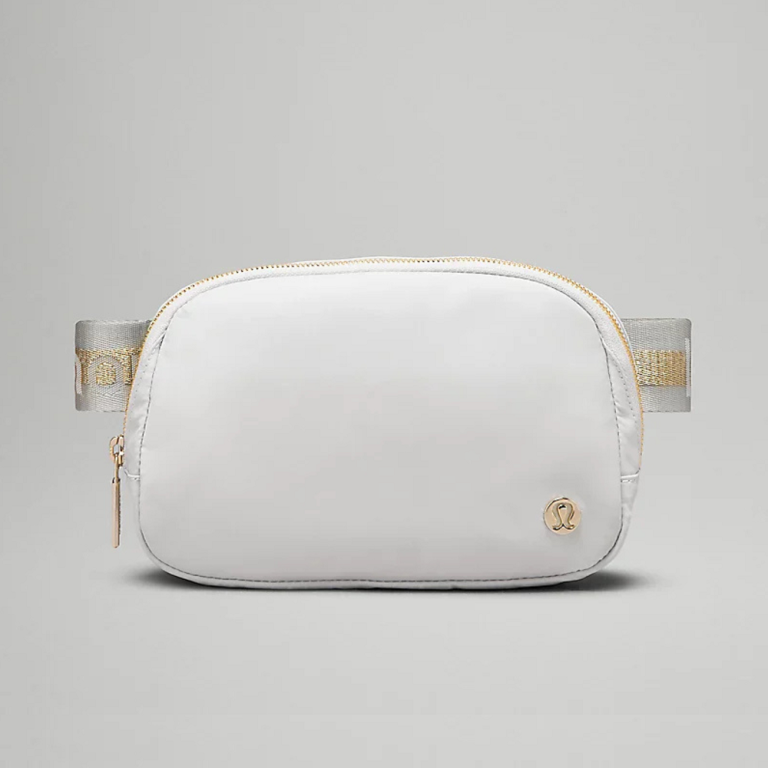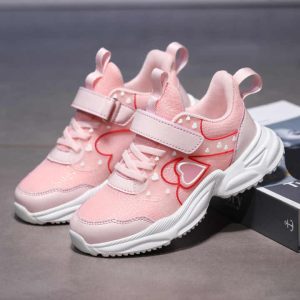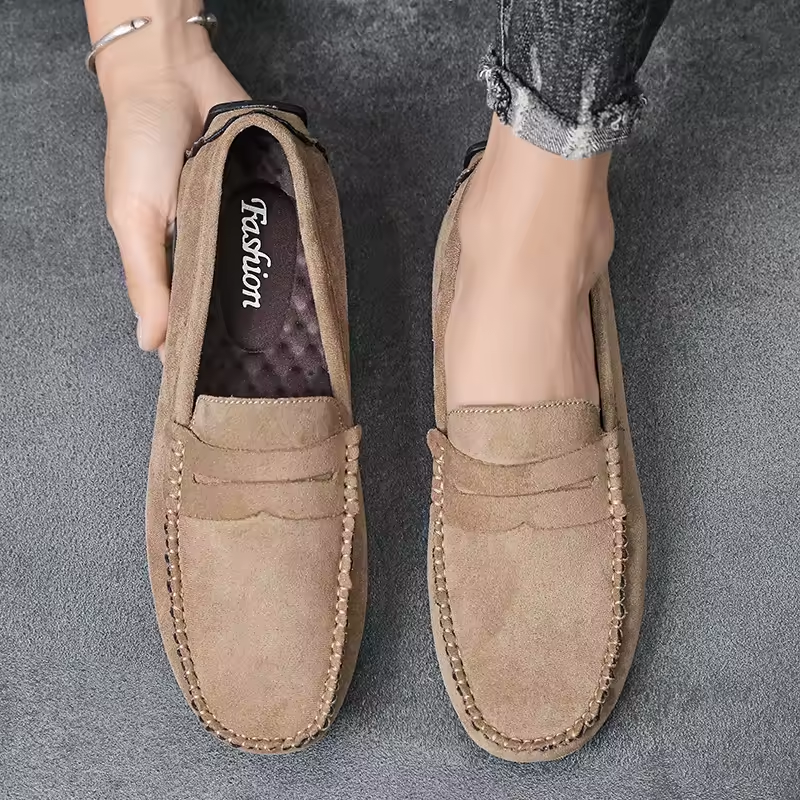The Importance of Proper Running Shoes
When it comes to running, the right footwear is crucial. Proper running sports shoes offer much more than mere foot protection. They provide the necessary support for your feet, reducing the risk of injuries. They can also enhance your running performance by improving your gait and stability. Besides, well-chosen running shoes can help prevent common issues runners face, such as blisters, shin splints, and plantar fasciitis.
Quality running sports shoes are designed to cater to different running styles and surfaces. They have features like cushioning, which absorbs shock and lessens the impact on your joints. Good traction is essential for stability and safety, especially when running on uneven or slippery terrain. The shoes’ breathability keeps your feet cool and reduces moisture, which can lead to blisters. Moreover, the right shoe fit ensures comfort and better control, contributing to a more enjoyable running experience.
It’s not just about comfort and injury prevention; the correct running sports shoes also influence your running efficiency. Shoes that fit well and are designed for your specific foot shape enable you to use your energy more effectively. This can lead to improved speed and longer running distances without extra effort.
Remember, investing in the right running sports shoes is investing in your overall health and running journey. It’s vital in helping you reach your athletic potential while keeping your feet happy and healthy on every run.
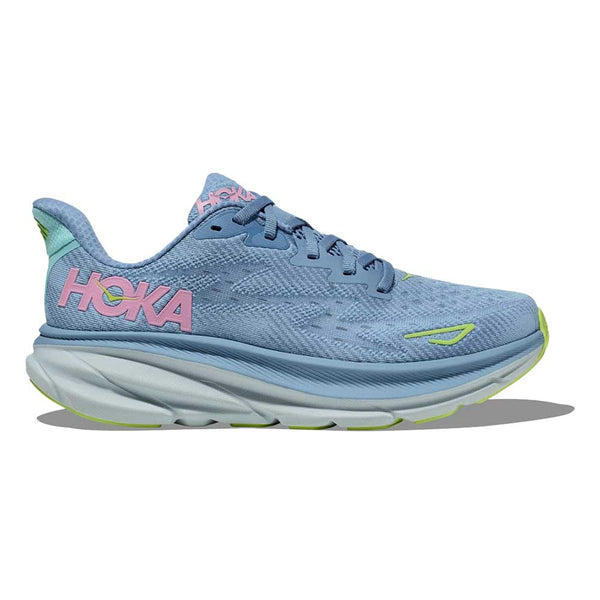
Key Features to Look for in Running Sports Shoes
Once you understand the importance of proper running sports shoes, the next step is knowing what key features to look for. These features make all the difference in comfort, performance, and injury prevention.
- Cushioning: This is crucial for absorbing impact. Good cushioning protects your joints during long runs.
- Stability: Stability features help control foot motion, which can prevent overpronation or supination.
- Traction: Look for soles with a grip that can handle the terrain you run on, be it trails or asphalt.
- Breathability: Shoes with breathable materials keep your feet cool and dry, lowering the risk of blisters.
- Fit: A snug fit, not too tight or too loose, ensures your shoe works with your foot, not against it.
- Durability: Durable shoes withstand miles of wear and tear, offering better long-term value.
- Flexibility: A flexible sole moves with your foot, promoting a natural running stride.
Make sure to try different styles and brands to find running sports shoes that meet these features while suiting your personal needs.
How to Choose the Right Fit for Your Feet
Choosing the right fit for your running sports shoes is essential. Follow these steps to ensure you make the best selection for your feet:
- Measure Your Feet: Foot size changes over time. Measure your feet regularly. Do it in the afternoon when your feet are largest.
- Consider Your Arch Type: Know your arch – high, medium, or low. This affects the type of support you need.
- Leave Some Wiggle Room: About a thumb’s width between your longest toe and the shoe end is ideal.
- Wear Your Running Socks: Try on shoes with the socks you run in to get the true feel.
- Test Them Out: Walk, jog, or run in the store. Make sure there is no slipping or sliding inside.
- Check for Hot Spots: While trying them, any pressure point can lead to blisters later.
- Understand the Return Policy: Some stores offer trial periods. Take advantage and return if they don’t fit right after a few runs.
By carefully choosing running sports shoes that fit your feet well, you improve comfort and reduce the risk of injury. Always prioritize a good fit over brand or style to ensure the best running experience.
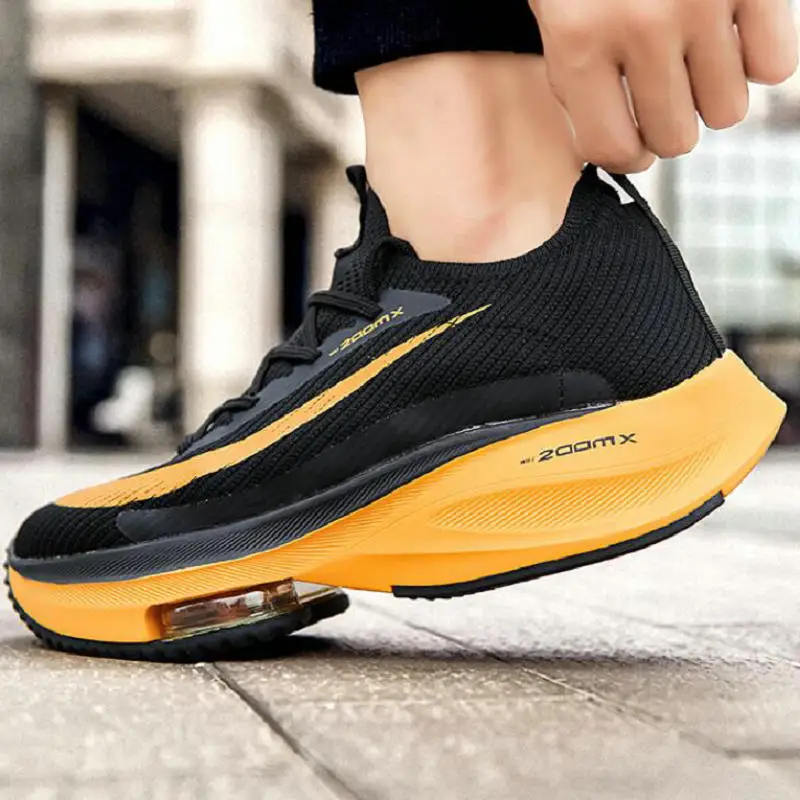
The Role of Shoe Technology in Enhancing Running Performance
Shoe technology has come a long way, especially when it comes to enhancing your running performance. Advances in shoe technology focus on various elements. These elements work together to improve each stride you take. Let’s dive into how modern technology in running sports shoes can help you run better and faster.
Advanced Materials for Better Cushioning
Manufacturers use new materials that provide better cushioning without adding weight. This means extra protection for your joints with each step. These materials also improve the shoe’s resilience, allowing you to run longer without discomfort.
Stability Features to Prevent Injuries
Modern running sports shoes include built-in features for increased stability. These features aim to correct overpronation or supination. They help in keeping your foot in a neutral position. This reduces the risk of injuries and improves your running posture.
Enhanced Traction for Various Surfaces
Shoes now have soles designed for specific terrains. From trails to tracks, the right traction is key. It ensures you have the grip you need to stay safe and in control.
Breathability and Moisture Control
High-tech fabrics let your feet breathe more easily. They also wick away moisture, which keeps your feet dry and free from blisters.
Lightweight Construction for Efficiency
Running sports shoes are now more lightweight than ever. This makes it easier to run longer distances. Lighter shoes mean less energy spent with each step, leading to improved efficiency.
Incorporating these shoe technologies can help you run more efficiently. They also make your running experience more comfortable and safer. Always check the tech specs when selecting your next pair of running sports shoes.
Common Mistakes to Avoid When Selecting Running Shoes
When choosing running sports shoes, many runners make avoidable mistakes. Understanding these errors can help you select better shoes and enhance your running experience.
- Ignoring Shoe Fit: Some runners pick a shoe based on style over function. Ensure the shoe forms fit your foot snugly without being tight.
- Choosing Wrong Shoe for Terrain: Not all shoes work for every terrain. Match your shoes to the surfaces you usually run on, be it trails or roads.
- Overlooking Shoe Life: Even the best running sports shoes wear out. Replace them regularly to avoid injuries from worn-out footwear.
- Skipping the Test Run: Always test new running shoes in a condition similar to your usual runs. This helps ensure they work well for your running style and needs.
- Neglecting Proper Research: Research before buying to ensure your choice has the right features and technology. Check reviews and expert recommendations.
- Missing Out on Deals: Sometimes, older models have the same features at a lower price. Keep an eye out for sales and last season’s models.
Avoiding these mistakes will help you pick perfect running sports shoes tailored to your needs and improve your overall running performance.

Maintenance Tips for Your Running Sports Shoes
Proper care and maintenance of your running sports shoes are essential for their longevity and performance. Here are practical tips to keep your shoes in top condition:
- Clean Regularly: Remove mud, dust, and sweat after each run. Use a soft brush and mild soap.
- Dry Thoroughly: Never put your shoes in a dryer. Air-dry away from direct heat or sunlight.
- Alternate Pairs: If possible, rotate between two pairs to give each one time to rebound.
- Use Proper Technique: Don’t kick off your shoes. Undo laces every time to maintain shape.
- Avoid Washing Machine: The vigorous cycle can damage the shoe’s structure. Hand wash instead.
- Store Properly: Keep them in a cool, dry place with good ventilation. Stuff with newspaper to maintain the form.
- Replace Insoles: Swap insoles when they wear out for comfort and shoe integrity.
- Check Soles: Inspect soles for wear and tear. If worn unevenly, it may be time for a new pair.
- Heed the Mileage: Running shoes generally last 300-500 miles. Track your mileage to know when to replace them.
By following these simple maintenance tips, you can ensure your running sports shoes continue to support and protect your feet on each run. Neglecting shoe care can lead to decreased performance and a higher risk of injury, so give your shoes the attention they deserve.
The Impact of Shoe Weight on Running Efficiency
The weight of your running sports shoes can significantly affect your running efficiency. As a runner, it’s important to understand how heavier or lighter shoes influence your performance. Let’s look at some key points.
- Lightweight Shoes: They generally improve your running economy. This means you use less energy to maintain your pace.
- Heavy Shoes: These can increase the effort required to run, which may slow you down over time.
- Muscle Fatigue: The heavier the shoe, the faster your legs may tire. This can affect your ability to keep a consistent running pace.
- Balance and Agility: Lighter shoes can boost your agility. This helps when making quick changes in direction or speed.
- Distance Running: For long distances, less shoe weight means more comfort and less strain on your joints.
- Personal Preference: Some runners prefer a bit more weight for perceived better cushioning and support.
The right balance of shoe weight contributes to a more effective and enjoyable running experience. When selecting running sports shoes, consider your personal needs and the weight’s impact on your running style. Always choose a pair that feels good and matches your running conditions.
Top Picks: Recommended Running Sports Shoes for Different Terrains
When looking for the best running sports shoes, consider where you’ll run the most. Different terrains need specific features to boost performance and safety. Here’s a guide to help you pick the top running shoes tailored to various terrains.
- For Road Running: Choose shoes with ample cushioning. They absorb shock on hard surfaces. Look for a smooth tread for stable grip on streets.
- Trail Running: Seek out shoes with robust traction. They should have deep lugs for grip on uneven ground. Durable uppers withstand rough terrain.
- Track Running: Lightweight shoes with a bit more spike. They offer better speed and efficiency on the track.
- Mixed Terrain: Go for versatile shoes. They need balanced cushioning, moderate traction, and durability.
Always test shoes on a similar surface as you plan to run on. Check the fit and feel to ensure they match your running style. By choosing the right running sports shoes for your terrain, you’ll enjoy improved comfort, protection, and performance with every stride.
